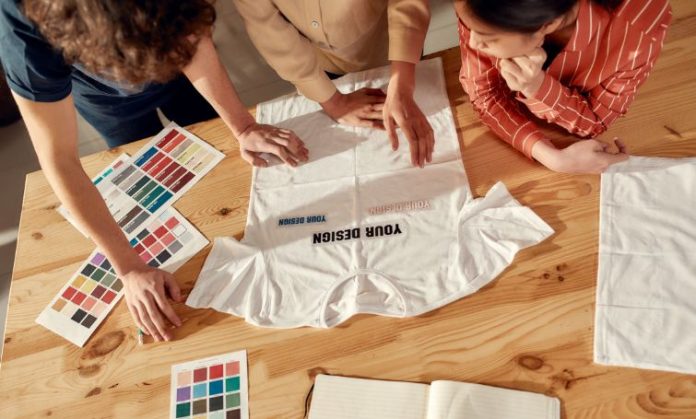Brand marketing entails online and offline strategies to reach more potential customers. The most effective promotional tactics is using brand merchandise. Most of these merchandise items have engraved company logos as a distinguishing mark, aiming to boost consumers’ brand familiarity, trust, authority, and loyalty. Branded merchandise items are also called promotional products. Examples of brand merchandise items include T-shirts, lanyards, caps, mugs, tumblers, calendars, and phone cases. They come in different sizes, uses, colors, and designs.
Brand merchandise items create a powerful connection that can extend to the customers’ families and friends who use or wear the item. They serve as a mobile and personalized marketing tool to benefit small, medium, and large businesses. In addition, using promotional products to drive business growth significantly matters. Branded merchandise marketing is a timeless marketing tactic. It’s constantly emerging and relevant even in this highly digital era.
From the digitally-penetrated marketing world, brand merchandise items give consumers a breath of fresh air. Hence, brand merchandise marketing brings a business closer to attaining high and steady long-term revenue. So, how does a business owner, manager, or marketer design winning brand merchandise? Read on below to find out.

- Draw Inspiration From Existing Graphic Elements
The first step to designing winning brand merchandise is to assess the business’s existing graphic elements, such as logo, company colors, and product design. Every color, stroke, or pattern must capture and coincide with the company’s mission, guiding principles, culture, products, and services.
A startup business can design a logo first and draw inspiration from it when designing brand merchandise items, like custom shirts, mugs, caps, lanyards, etc. The latest trends in business logo design includes minimalism, layered element, retro, and candy colors.
Brand marketers can also incorporate company colors into the promotional products to quickly drive brand awareness. Any long-time existing business already has a solid customer base familiar with the company colors and logo. Hence, they can easily promote the brand through word-of-mouth or by simply using or wearing the brand merchandise to their family and friends.
Many e-commerce, retail, and manufacturing businesses incorporate their existing product design into brand merchandise items. This strategy boosts consumers’ awareness of their products. So, once people shop online, in their physical store, groceries, or supermarkets, they’ll remember the brand quickly and increase the chance of patronizing the company’s products.
- Brainstorm Sales, Marketing, And Customer Service Teams
Meeting sales, marketing, and customer services teams can help properly plan and design winning brand merchandise. Managers can gather helpful insights from each team and weigh the pros and cons. By doing so, they can create and present several design prototypes for well-informed decision-making.
Sales, marketing, and customer service teams can huddle in a weekly meeting and share their suggestions, observations, and expertise. In this way, designers can better understand what these teams want to highlight in the brand merchandise design. This collaboration will likely result in a more successful marketing campaign.
- Gather And Consider Customer Feedback
Before mass-producing promotional products, gathering customer feedback is advisable. This step involves conducting split or A/B testing. It consists in creating two or more brand merchandise designs and checking what best appeals to a small group of customers or subjects.
For instance, ask the subjects to choose from a custom T-shirt with a large company logo printed on the back and another shirt with a smaller logo on the front. While individual taste differs, the design with the majority’s votes wins.
By gathering customers’ feedback, marketers and designers can determine the best features and benefits people want on promotional products. In this way, their efforts won’t be wasted. For instance, a company’s target customers would possibly prefer a customer organizer over shirts.
Ask customers to fill up online or paper survey forms with relevant brand merchandise questions. The marketing team can segment participating customers according to their common characteristics to create buyer personas. This step is essential in split testing brand merchandise designs before the final selection stage.
- Infuse With Other Marketing Strategies
Using brand merchandise items is a marketing tactic in itself. Incorporate brand merchandise into other marketing strategies, such as social media, content, and gamification marketing.
Hold a contest on social media. Ask followers to use or wear the freebie promotional products along with their recent purchases online and take selfies. The best selfie photo can get a chance to win high-value brand merchandise, gift certificate, or store redeemable voucher.
Content marketing through a press release can help spread the word about brand merchandise. This marketing tactic brings customers excitement and urgency to buy a company’s products and become the first to have one of those well-designed brand-exclusive merchandise items.
Gamification changes advertising. It’s a proven-effective way to drive leads. Therefore, incorporating brand merchandise as cool prizes in different games, like a lucky draw, crossword puzzle, personality quiz, or word hunt, is a good idea.
- Choose High-Quality Brand Merchandise Items
The online market is flooded with cheap merchandise products. But it doesn’t mean a brand can settle for the cheapest materials.
Customers based business perception on the quality of products and services, which also applies to its brand merchandise items. For this reason, businesses must only use premium-quality materials to show great value to customers. This strategy can help drive brand authority and customer trust and loyalty.
Business owners must compare different sellers or companies. They can read reviews, seek referrals, and create a shortlist to choose the right promotional product supplier. Furthermore, business owners or managers can request some samples to check the quality before ordering merchandise items in bulk.
Aside from the promotional product’s quality, businesses must also consider the item’s functionality and application. Determining what customers want is crucial in designing winning brand merchandise items. Most customers want something useful, like shirts, caps, organizers, mugs, water containers, and calendars.
Conclusion
Businesses shouldn’t underestimate the power of brand merchandise marketing. Designing winning branded merchandise involves considering the business-relevant graphic elements, like logo design and colors. Gather customer feedback, brainstorm with marketing teams, and test designs to create winning brand merchandise designs. Moreover, it’s crucial to use high-quality materials from a reputable supplier to create profit-generating promotional products and provide great value to customers.



























